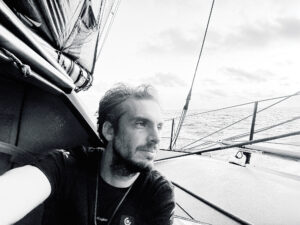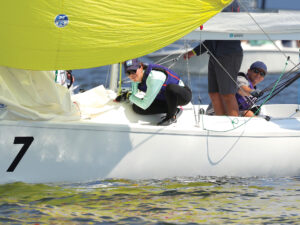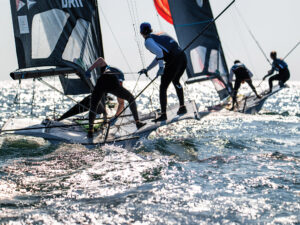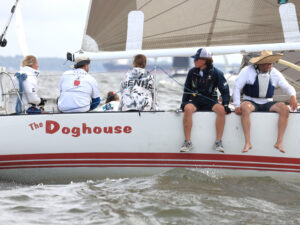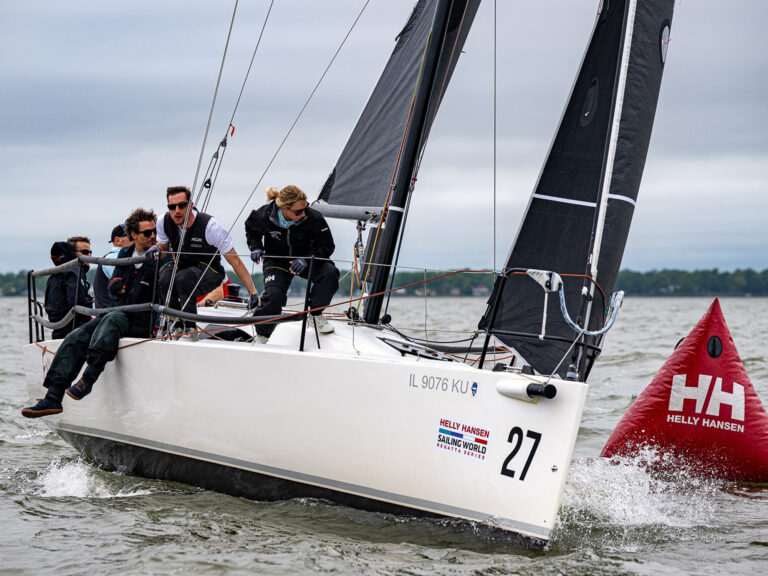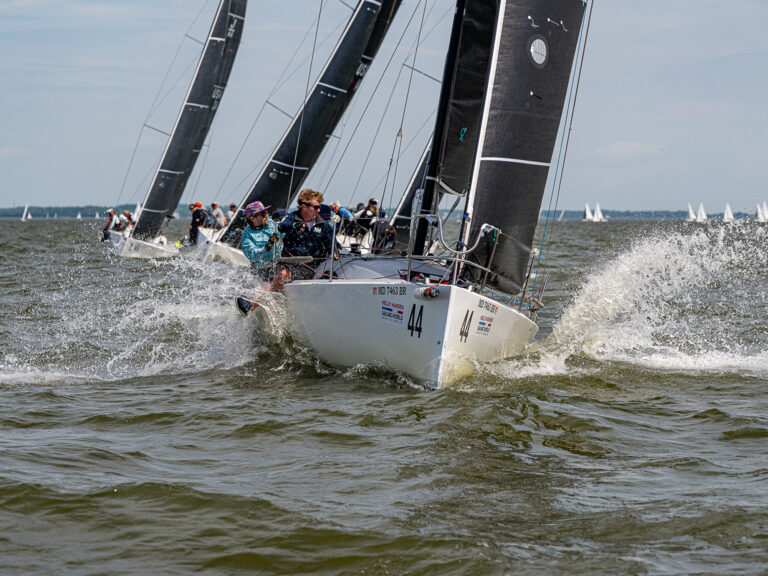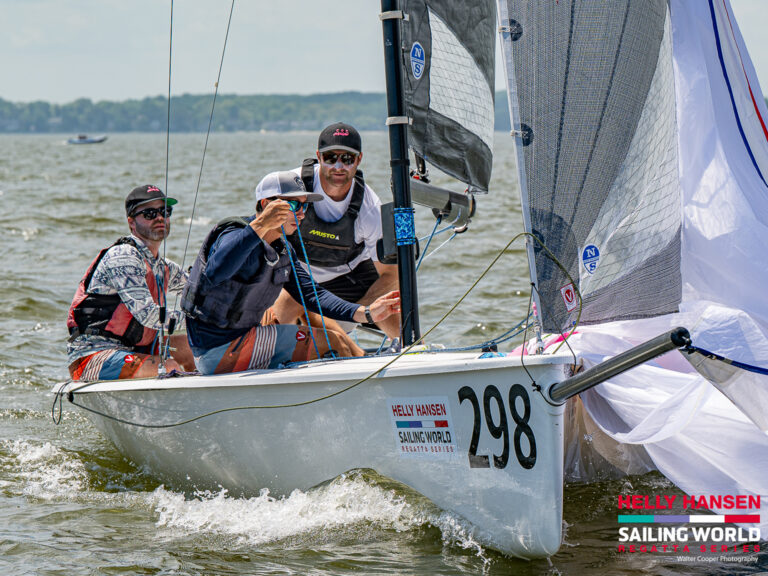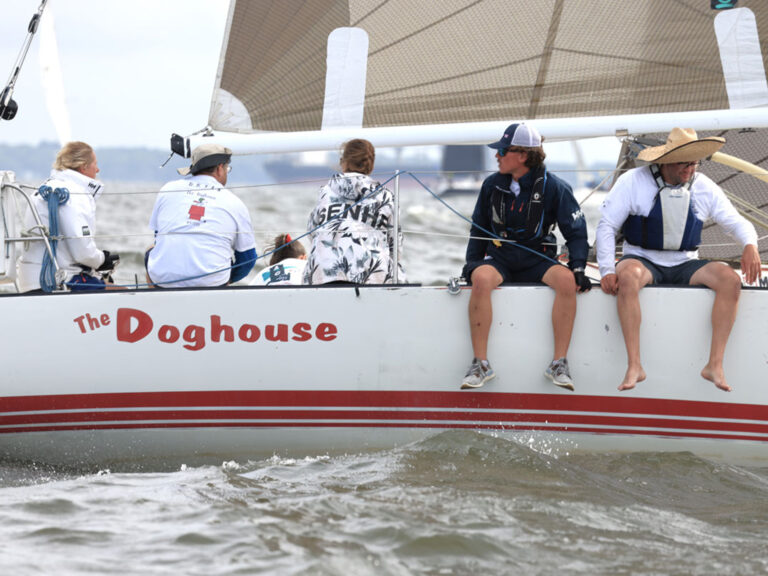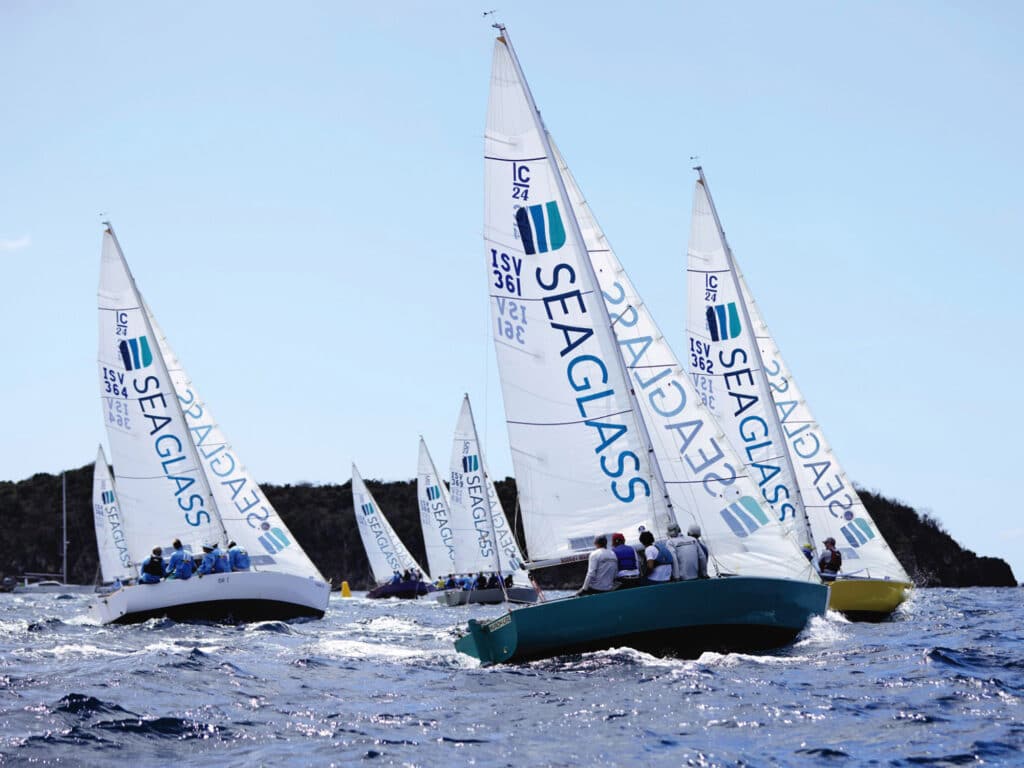
Here is the honest-to-goodness truth: After a North U Performance Race Week in St. Thomas, you will be faster, smarter and definitely a little sunburned. Most importantly, though, you will be ready for your home-fleet racing, with one distinct advantage: You will have done more starts, more mark roundings and a lot more boathandling than in an entire season. It’ll feel like boot camp in paradise, but when you get home, you’ll be ready to serve.
This tropical Performance Race Week happens twice each winter, once in February and once in March, and running the immersive sail-racing clinic is the kind professor himself, Bill Gladstone, who’s been teaching the North U curriculum for decades and always greets the students with a kind smile and inquisitive head lean.
North U is now owned by the American Sailing Association, whose primary mission since the early 1980s has been to teach sailing and seamanship. With Gladstone’s North U in their portfolios, they’re now expanding into teaching racing through live clinics and online courses. Race Week students, from all sailing walks and classes, spend a couple grand apiece to get schooled on boatspeed, tactics and rules. But ultimately, the experience is all about teamwork, and the lesson plan is reinforced over five long eight-hour days on the water, in the classroom and with onboard coaches.
As this year’s March edition of Race Week gets underway on an early Monday morning at the St. Thomas Sailing Center, the birds are chirping as Gladstone assembles the eager students. After pairing them with their coaches, he proceeds to pull boat assignments from a hat. It’s no secret among the veteran coaches that some of the IC24s, which are modified J/24s, are faster than others. But at the end of the day, the boat draw doesn’t matter because if the crew work isn’t sharp, a faster boat isn’t going to make a difference.
For the team I’ve been assigned to as a coach, what does matter is the color of the boat. Gladstone pulls our team’s name and announces One Love. It’s the bright yellow that’s impossible to miss on its mooring. My first reaction is, “Oh no, not the yellow one.” Brightly colored boats always get the starting-line caller’s attention. But my team is ecstatic with the draw. The Olson 30 a few of them race back home in Duluth, Minnesota, is yellow and appropriately named Tweety.
I’m not thrilled about the whole color thing, but I do like the name, which is fitting for the exercise we are about to embark on. It’s a song of unity, and that’s what the goal will be: a tight unit with respect for each and their skills, doing our job to the best of our ability. Over the next five days, we’re going to get together and feel all right.
My teammates are Bob Schroer, Marne Kaeske, Melissa Kuntz and Tim Buck. Each of them are in St. Thomas for individual reasons, but they’ve come as a team. When their sailing seasons get underway in a few months, they’ll be racing at Minnesota’s Duluth YC on Schroer’s Olson 30 and Buck’s Aerodyne 38.
For Schroer, priority No. 1 is crew mechanics. And after that, understanding wind patterns and helm balance. For Kaeske, who is relatively new to the racing thing, it’s about confidence and knowing what’s going on inside and outside the boat. Buck’s goal is to correct “decades of bad habits,” but also sail trim and better helming. And for Kuntz, it’s simply about being more comfortable with helming.
This much is all I can discern as we hastily gather for our first team meeting in One Love’s cockpit before rigging and dropping our mooring lines in St. Thomas’ picturesque Cowpet Bay. Gladstone runs a tight schedule, so there’s no time dawdle. A quick run through the boat setup and who’s doing what in the first rotation, and off we go in the direction of Christmas Cove. The morning’s session focuses on the basics of tacking, upwind sail trim and rotating everyone through every position. And when it’s too soon, we’re back ashore for Gladstone’s first classroom session and lunch at the club. The afternoon’s focus is spinnaker handling and crew rotations. With some additional classroom time and a video debrief, the sailors slink back to their condos, heads full of tips and bodies worn from a long day on the water.
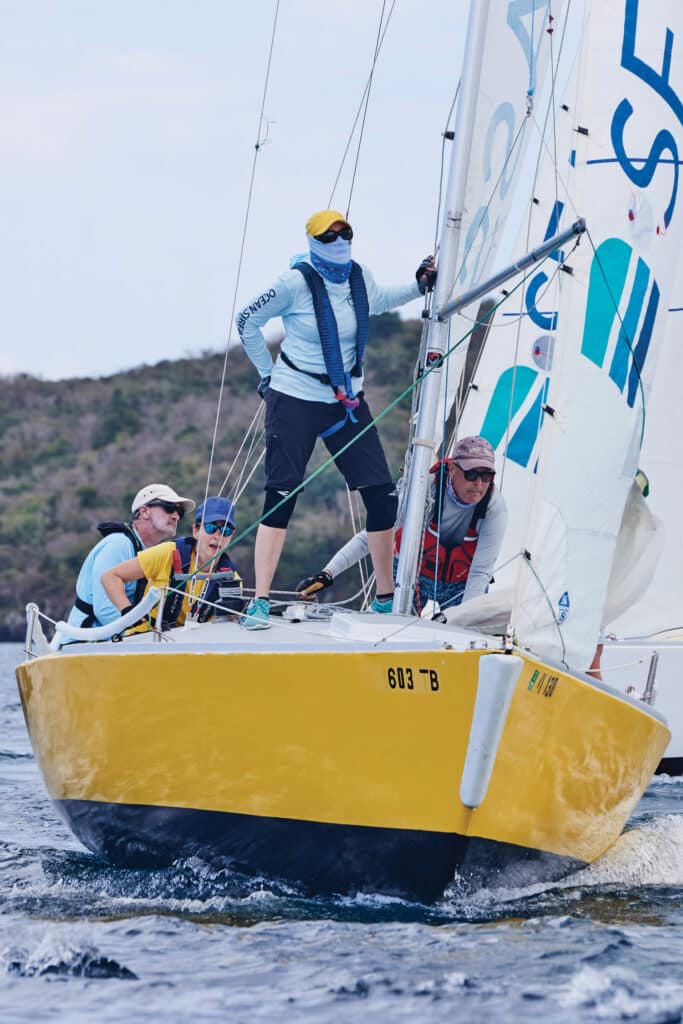
The routine continues the next morning, with the addition of starting practice and one-lap windward/leeward races. Each “real” start is preceded by two practice starts, and by lunchtime, it’s easy to understand why Gladstone promises more race starts than a season’s worth. In two days, I think we’ve already met our quota. To mix things up and introduce a few more challenges, Gladstone adds an hourlong around-the-island race, a counterclockwise lap around nearby Great Saint James, which adds in some navigational skill development as well as some strategy lessons in navigating through swift currents and wind shadows.
On board One Love, I’m feeling pretty chuffed with the team I’ve been assigned because one of the biggest challenges of Performance Race Week is the mandatory crew rotations. Pushing students well out of their comfort zones and outside their normal crewing positions creates all sorts of stress and unfamiliar situations. The bow is usually the most difficult to master for those who commonly hold the helm. And for those who never drive, strong winds, waves and a fleet of student drivers make for heart-pounding starts and mark roundings.
On One Love, Buck and Schroer were plenty comfortable at the helm, but the most peculiar thing started happening: Kaeske and Kuntz, both of whom claimed zero experience driving in a race, were outstanding. By the fourth day of the clinic, our team were beyond basics and focusing on the 2.0 details, like cross-sheeting, passing the tiller behind their backs, roll-tacking and jibing. In four fast-paced days, I witnessed an amazing transformation in this foursome—more laughs, a lot less stress around the corners, and more confidence around the track.
We’re mentally ready for the final-day regatta, where the coaches shall only coach between races. But to be sure, I suggest some morning calisthenics on the mooring. I trigger my stopwatch for five minutes, and we get a few curious looks from other teams passing by as Kaeske is on the foredeck end-to-ending the pole to lazy spinnaker sheets, Kuntz is at the back doing tiller passes, Buck’s refining his jib cross-sheeting exchanges, and Schroer is practicing the roll-and-flatten with the mainsheet in hand. Now it’s really looking like boot camp, and all we’re missing are jumping jacks and burpees.
The “regatta” portion is a two-session, seven-race day, with races in the morning, including one distance race round Great Saint James—this time clockwise—a lunch break at the club, and more races in the afternoon. And as Gladstone promised, we got as many races in as you would over a typical three-day weekend regatta. It’s fast-paced fun in the sun. Team One Love is solid midfleet going into the lunch break and, perhaps with a bit of a food coma, puts a 6 on the scoreboard before finally winning a race and closing with a fifth in the eight-boat fleet.
On the dry-erase scoreboard back at the club, we later learn we’ve tied for third. On the countback, the team on Huron Girl beats us with a second to our third, and that’s that. Second place is only two points away—so close. But Performance Race Week is not really about points on the board. It’s about getting faster and smarter, and while a sunburn will soon fade, the memories and the lessons will last a lifetime.

